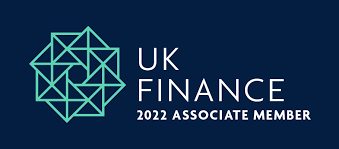What is A Secured Line of Credit?
A Secured Line of Credit is a flexible financial product that allows businesses or individuals to borrow funds up to a certain limit, using their assets as collateral. This type of credit is commonly used for managing cash flow, funding short-term needs, or financing investments. Here’s a detailed explanation tailored for a UK audience:
- Definition:
- Secured Line of Credit: A secured line of credit is a revolving credit facility backed by collateral, such as property, equipment, or other valuable assets. The borrower can draw funds as needed up to the credit limit and only pays interest on the amount borrowed.
- Key Features:
- Collateral Requirement: Requires the borrower to pledge assets as security, reducing the lender’s risk and potentially offering better terms.
- Revolving Credit: Functions as a revolving credit line, allowing the borrower to withdraw, repay, and redraw funds up to the credit limit.
- Interest Payments: Interest is charged only on the drawn amount, not the entire credit limit, which can lead to cost savings.
- Flexible Access: Provides flexible access to funds, making it ideal for managing cash flow fluctuations or financing short-term needs.
- Types of Collateral:
- Real Estate: Property such as residential or commercial buildings.
- Equipment: Machinery, vehicles, or other business assets.
- Inventory: Goods held in stock that can be quickly liquidated.
- Financial Assets: Savings accounts, investment portfolios, or other liquid assets.
- Benefits:
- Lower Interest Rates: Typically offers lower interest rates compared to unsecured credit lines, due to the reduced risk for lenders.
- Higher Credit Limits: Can provide higher credit limits because of the collateral backing.
- Flexible Usage: Allows borrowers to access funds as needed, making it suitable for variable financial needs.
- Improved Cash Flow Management: Helps businesses or individuals manage cash flow more effectively, especially during periods of fluctuating income or expenses.
- Challenges:
- Risk of Asset Loss: If the borrower defaults, the lender can seize the collateral to recover the debt.
- Complex Approval Process: The approval process can be more complex and time-consuming, requiring detailed asset valuations and documentation.
- Ongoing Management: Requires careful management of the credit line and collateral to avoid over-leveraging.
- Example:
- A UK-based manufacturing company needs a flexible funding solution to manage cash flow fluctuations due to seasonal variations in sales. The company secures a £200,000 line of credit from a bank, using its manufacturing equipment as collateral. The company draws £50,000 to cover short-term expenses and repays it within three months. Interest is only charged on the £50,000 borrowed, not the entire £200,000 limit. The company can continue to draw and repay funds as needed, using the equipment as security.
- Legal and Regulatory Considerations:
- Collateral Valuation: Ensure accurate valuation of collateral to determine the credit limit and reduce risk.
- Regulatory Compliance: Comply with UK financial regulations and lending practices, including the Financial Conduct Authority (FCA) guidelines.
- Contractual Clarity: Clearly define the terms and conditions in the credit agreement, including interest rates, repayment schedules, and default consequences.
- Best Practices:
- Regular Monitoring: Continuously monitor the value of the collateral and the outstanding balance to ensure compliance with the credit terms.
- Maintain Good Credit: Keep a strong credit profile to negotiate better terms and interest rates.
- Understand Terms and Conditions: Thoroughly understand all terms and conditions of the secured line of credit to avoid surprises and manage risks effectively.
- Financial Planning: Integrate the secured line of credit into broader financial planning and cash flow management strategies.
In summary, a secured line of credit in the UK is a valuable financial tool that provides flexible access to funds backed by collateral. It offers benefits such as lower interest rates, higher credit limits, and improved cash flow management, but also comes with risks like the potential loss of collateral. Proper management, regular monitoring, and understanding of the terms and conditions are essential to maximize the advantages and minimize the risks associated with a secured line of credit.

